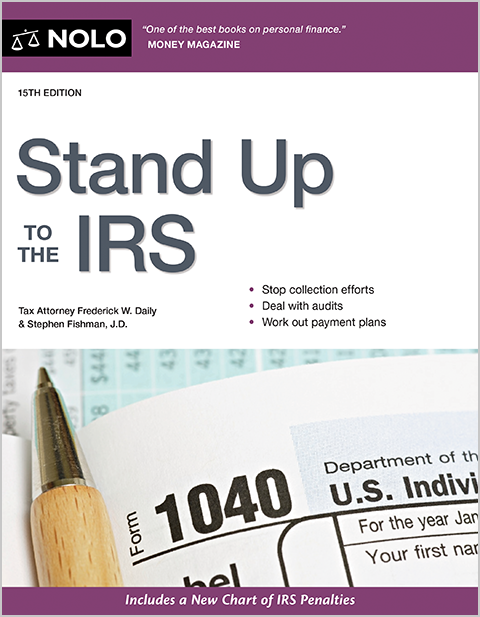You can dispute a debt with the IRS by filing a Collection Due Process Hearing Request to level the playing field and ensure the IRS does not take more money than you owe.
If you have an outstanding debt with the Internal Revenue Service (IRS) that is not resolved, then the IRS may pursue collection activities. The IRS uses two main types of collection activities against individuals: (1) the NTFL (Notice of Federal Tax Lien) and (2) the filing of a bank levy. The IRS may also seek a wage garnishment, which is a type of levy.
If you disagree with the amount of tax the IRS claims you owe and you act timely, you can file a Collection Due Process (CDP) hearing request and stop collection activities pending the CDP hearing – but time is of the essence.
What is a Collection Due Process Request?
Under Internal Revenue Code Section 6320, you have a right to a hearing request before an impartial officer when the IRS has either filed a federal tax lien against you or put you on notice of the IRS's intent to file levy against you. The two main types of IRS letters are:
- IRS Letter 3172: Notice of Federal Tax Lien File and Your Rights to a Hearing; or
- IRS Letter 1058: Notice of Intent To Levy and Notice of Your Right to a Hearing
Once you receive the notice from the IRS regarding a lien or notice of levy, you generally have 30 days from the date of the letter to file a CDP hearing request.
What is a Notice of Federal Tax Lien?
A federal tax lien can have serious consequences. This is because if the lien is attached to your home, it may make it very difficult for you to refinance a home. Moreover, it may scare potential buyers away from purchasing your home since anything associated with the IRS has a way of instilling fear into everyone in its path. If the purchaser learns of the lien during a title search of your home, don't be surprised if he or she turns tail and runs!
The one silver lining is that the IRS usually cannot "force the sale" of the property; rather, once the property is sold (or foreclosed on), the IRS can then try to obtain money from it.
What is a Notice of Intent to Levy?
A Notice of Levy is a more serious issue, since it may have an immediate financial impact on your life. If you receive a Notice of Intent to Levy your bank account then the IRS is trying to immediately seize the funds out of your bank account. If you disagree with any portion of the debt the IRS alleges you owe, it is very important that you file a CDP request within 30 days of receiving the notice. This is because once a levy is issued against your bank account, the IRS can take as much money as you have in the account to satisfy the tax debt (though once the actual levy is filed, you still have 21 days to try and get the levy removed).
Note that if for any reason the IRS levies too much money, then it will be your responsibility to seek a refund against the IRS. If you think the IRS is generally nonresponsive - try getting a response from them when you are seeking a refund.
How do you file a Collection Due Process Request?
You can prepare and submit a Collection Due Process Request on IRS Form 12153, Request for a Collection Due Process or Equivalent Hearing. This form requires you to provide background information about you, as well as the reason(s) why you think the IRS should not pursue the lien or notice of intent to levy against you. You can obtain a copy of the form with instructions on the IRS website.
If the form is not completed properly, it will be rejected, and keep in mind that the IRS is always looking for a way to reject your form.
How much time do you have to file the CDP Hearing request?
Thirty days from the date of the letter. This is a very strict requirement and if you do not file within the requisite 30 days, you lose the right to a CDP Hearing Request. If the CDP is filed timely, then the IRS must stop collections on the debt amount pending the outcome of the hearing.
If you miss the 30-day deadline, you can still file for an "Equivalency Hearing" but the IRS is authorized to pursue the debt against you pending the hearing.
Where do you file the IRS Form 12153?
There is not one specific department where you file the 12153 CDP request form. Rather, the form is usually sent to the address identified on the Notice of Federal Tax Lien or Notice of Intent to Levy that you received in the mail.
- Before submitting the completed Form 12153, you should contact the IRS department that is identified on theNotice of Intent to Levy or Notice of Federal Tax Lien in order to confirm with the IRS if there is any person in particular who you should address the request to.
- Also, you should request a copy of the department's fax number so you can fax the application as well - although oftentimes they will not provide it.
While it may seem like a David and Goliath moment when you are fighting the IRS, the Collection Due Process hearing request is a great way to even the playing field that provides taxpayers with an opportunity to cease collections on a debt pending a CDP Request Hearing.
Talk to a Tax Attorney
Need a lawyer? Start here.
How it Works
- Briefly tell us about your case
- Provide your contact information
- Choose attorneys to contact you
- Briefly tell us about your case
- Provide your contact information
- Choose attorneys to contact you

